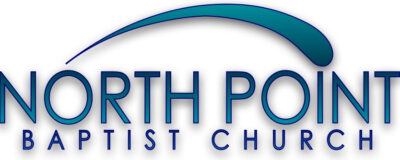October 15, 2020
The Feasts
Passover, Unleavened Bread, and First fruits
Leviticus 23
The Old Testament called for the annual celebration of seven mandatory and meaningful feasts. These feasts were separated into two groups. Four of them took place at the commencement of the religious year. Then came a pause, after which the three remaining feasts were kept. These feasts are prophetic in character. The first four feasts anticipated Christ’s first coming; the last three anticipated Christ’s second coming. The two-thousand-year period (so far) covered by the church age separates the two comings.
We shall begin with the commencement feasts, the first four feasts that were fulfilled at Christ’s frst coming. Three of these anticipate the work of the Savior. The remaining one anticipates the work of the Spirit.
The Feast of Passover points to our redemption. On the tenth day of the month the people took a lamb free from all blemish and kept it tethered until the fourteenth day. During this period it was closely watched. It was killed on the fourteenth day between the sixth hour and the ninth hour. On the original Passover, the night of the Exodus, its blood was applied to the lintels and doorposts of homes so that those sheltering behind it would be saved from the avenging angel’s sword.
The Feast of Unleavened Bread (which lasted a week) was closely associated with Passover. The Passover lamb was killed on the fourteenth day. Immediately afterward, on the fifteenth day, a weeklong feast, known as the Feast of Unleavened Bread, began. The Hebrews were to thoroughly cleanse their houses of all leaven. Leaven in Scripture is used by the Holy Spirit as a type of sin. The Feast of Unleavened Bread points to our regeneration. The old is purged out, and the new takes it place.
Two of the feasts lasted a week; the others were one-day affairs. The feasts that occupy a single day point to some specific act of God. Passover, for example, takes us straight to Calvary. Feasts that lasted seven or eight days (Unleavened Bread and Tabernacles) point to future events destined to span well-defined periods of time, namely the church age and the millennial age.
Note God’s order with the Feast of Unleavened Bread, First, the blood was applied. Then came feasting on the lamb. Only then was leaven put out of the house. That is God’s order. First there has to be redemption. Then a clean lifestyle must follow, God’s house is prepared as God’s home. The Hebrew housewife was diligent in her search for lurking leaven. She scoured every cupboard, every nook and cranny of the house, to make sure that not so much as a scrap of leaven remained.
In the New Testament leaven is a picture of hidden sin. Leaven in a loaf of bread, for instance, speaks of those things which, once introduced, continue to work away in secret until their activity is killed by fire. Throughout the whole period of seven days, vigilance had to be maintained lest leaven be somehow introduced. During this church age in which we live, constant watch must be maintained so that no corrupting influence lurks in our homes and no hidden sin is allowed to remain unjudged in our hearts.
The Feast of firstfrsuts points to our resurrection, This feast was kept on the first day of the week, on the Sunday after Passover. This was the very day Christ arose from the dead. The farmer cut one golden sheal from the harvest field and brought it to the priest, who waved it before the Lord. It foreshadowed the full harvest soon to come. The Feast of Firstfruits was fulfilled when the Lord was raised from the dead and when many other dead people arose at the same time, went into Jerusalem, and appeared unto many (Matt. 27:52—53). These people correspond to the wave sheaf. In His resurrection and in their resurrection, we see the sure promise and guarantee of our resurrection. All these things the Savior accomplished for us at His first coming. He has saved us, sanctified us, and secured us. We can rest assured as to that.
100 Devotions for Leaders – 2008 by John Phillips – Published by Regal Publications Grand Rapids, Michigan
Pastor Lee’s Thoughts: When I begin to contemplate how the Lord designed these feasts and they application in which they apply to our lives, I am amazed again at His perfect design. Everything that Christ has done has been on purpose and for a purpose. I am thankful I serve the Almighty Perfect Risen Savior!
